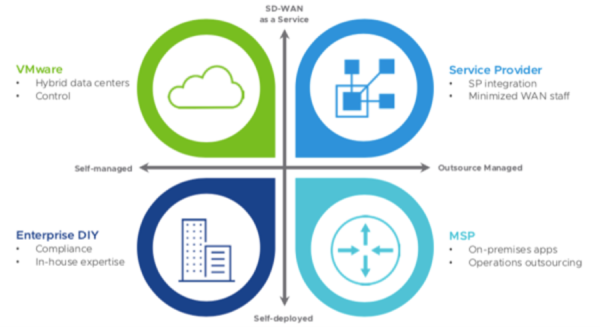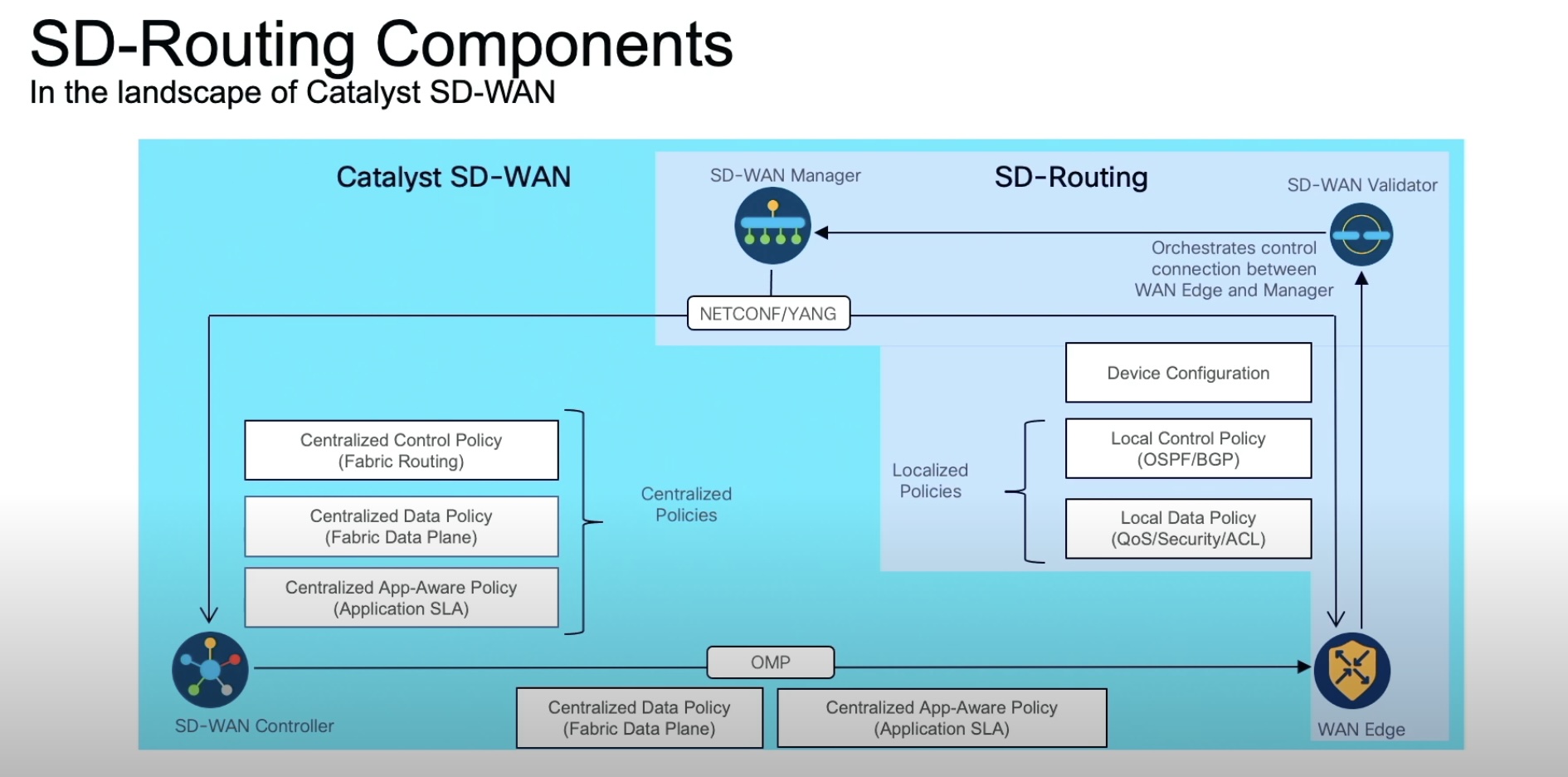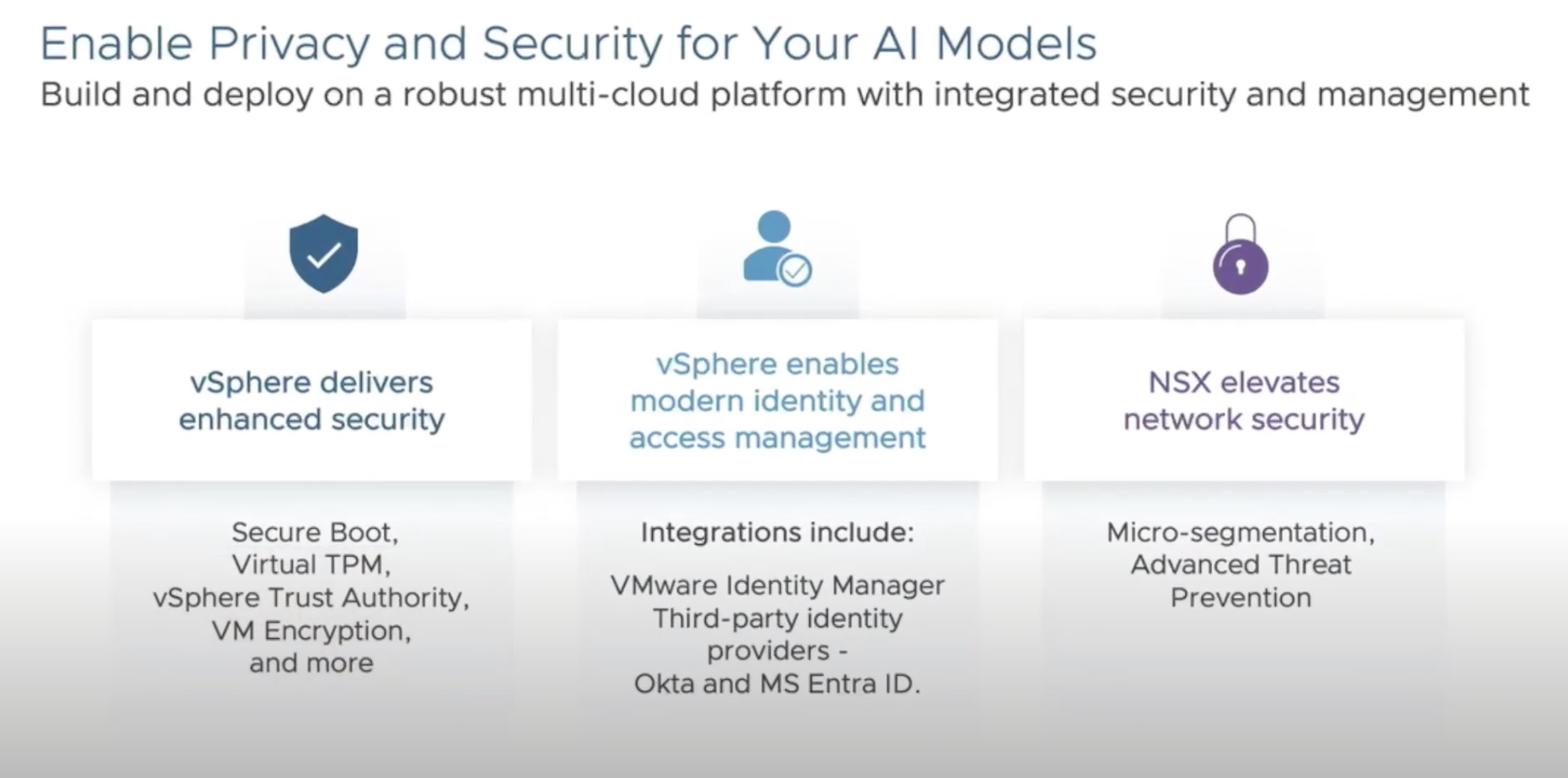I’m going to assume that everyone checking in here has some basic idea of what SD-WAN is and why it’s become such a hot topic. In short, the cloud. But that’s not the end of it.
It’s just the beginning.
Roundtable Discussion sponsored by VMware featuring: Kishan Ramaswamy, Chris Grundemann, John Deegan, and Tom Hollingsworth
Today I’m going to walk quickly through a few of the top use-cases for VMware SD-WAN™. Along the way, we’ll learn a bit more about why you need SD-WAN and why VMware is the top choice across so many scenarios.
Traditional Enterprise WAN
I call this use-case ‘traditional’ because this is the type of WAN that most folks who work in Enterprise IT will be most familiar with.
There are many small to mid-size enterprises out there that need to connect a few dozen or more sites across a single state, country, or region. As industry after industry digitally transforms itself, these companies have become increasingly reliant on SaaS applications only available over the internet. This digital transformation, of course, has been a large driver of SD-WAN.
One other key characteristic of these mid-market companies operating regional WANs is that they often have a smaller IT staff. That means they are typically hyper-focused on ease of use and automation (or outsourcing). This ease-of-use makes VMware SD-WAN an excellent fit for mid-market companies.
As I’ve written previously, VMware SD-WAN offers flexibility in both deployment and management models. This is illustrated in the below diagram:

The first thing to notice here is the X and Y axis, which divide the space into four separate areas:
- Self-deployed, self-managed (Enterprise DIY)
- Self-deployed, outsource managed (Managed Service Provider (MSP))
- SD-WAN as a service, self-managed (VMware)
- SD-WAN as a service, outsource managed (Service Provider)
The flexibility to deploy VMware SD-WAN yourself or consume it as a service has added to the ability to choose to self-manage or outsource that management. This flexibility provides all the options a small or mid-size enterprise IT team might need to turn their traditional WAN into an SD-WAN.
Large Global WAN
Not all enterprises are equal, which means WANs can’t be either. When you’re working in a large multi-national company, the pressure escalates, and so does scale. In this case, we’re talking about a WAN with hundreds or thousands of sites spread around the globe.
One of the challenges that come with this kind of scale is diversity. In these environments, it is common for offices to vary significantly in size, and perhaps more importantly, for local connectivity to differ hugely in speed and quality.
Luckily, VMware SD-WAN can connect various speeds and feeds (including MPLS, LTE, Wi-Fi, DIA, and broadband) and ensure a consistent user experience.
One technology that VMware leverages for this is Dynamic Multipath Optimization™ (DMPO). DMPO provides automatic link monitoring, auto-detection of providers, and autoconfiguration of link characteristics, routing, and QoS settings. VMware also brings to the table deep packet recognition (DAR) with a database of over 3,000+ applications, which allows real-time traffic steering based on fine-grained business policy. These tools, along with many others, provide an exceptional user experience, no matter where in the global WAN they connect.
Cloud-Native WAN
What’s super interesting to me about SD-WAN is that while it was born from necessity driven by the cloud, SD-WAN is now helping to drive (or at least facilitate) cloud adoption. Can I have ‘virtuous cycles’ for $500, Alex?
As you might have guessed, this is another area where VMware SD-WAN shines. There are two significant reasons for that. One is ONE; the other lies in multitudes.
First, ONE, more specifically, I am talking about another VMware product called Workspace ONE, which is ‘the integrated digital workspace platform that simply and securely delivers and manages any app on any device.’
What is most interesting about it in this context is that when you integrate Workspace ONE with VMware SD-WAN, you can connect remote workers without putting CPE on site!
Second, multitudes; more than 2,000 to be accurate. If you guessed that I’m talking about VMware SD-WAN Gateways, then maybe you didn’t need to read this article after all. For the uninitiated, VMware SD-WAN Gateways are cloud on-ramps deployed worldwide by VMware and its service provider partners to ensure optimal data paths for network services between any branch, application, and cloud.
Whether you call yourself cloud-first or cloud-native, and whether your WAN spans the city or the globe, VMware SD-WAN by VeloCloud seems an obvious choice.




